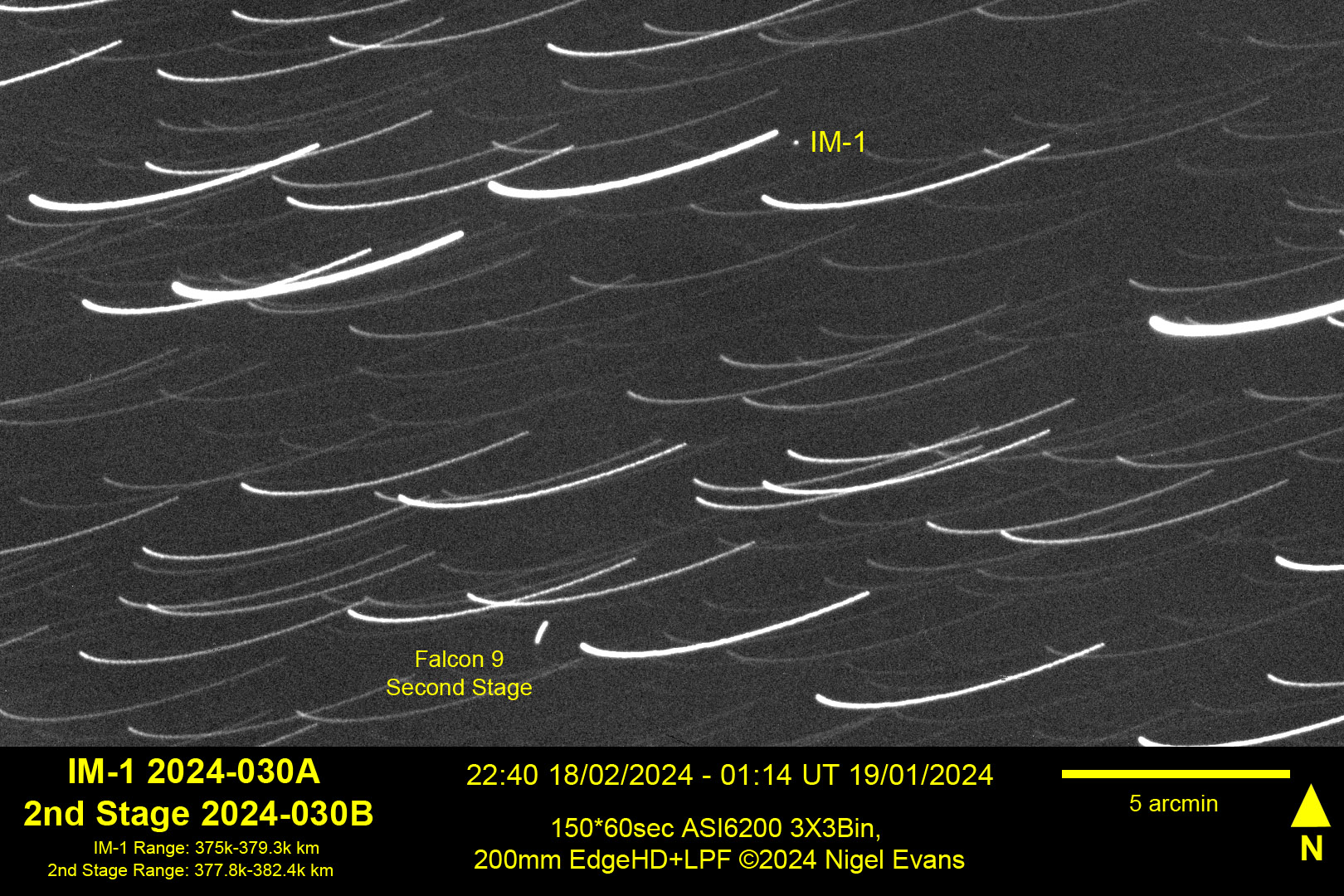
Orwell Astronomical Society (Ipswich)
Lunar Mission IM-1,
18-23 January 2024
Intuitive Machines' IM-1 mission aims to place a NOVA-C lander named Odysseus on the lunar surface, at the small crater Malapert A, near the south pole. The mission was launched at 06:05 UT on 15 February 2024 from Kennedy Space Center by a Space X Falcon 9.
The weather in the UK following launch varied between cloudy and very cloudy, but an observing opportunity arose on the evening of 18 February. IM-1 was well placed to be seen from the UK but patchy clouds early-on sometimes obscured the view. After the craft crossed the meridian, the sky was clear until a bank of clouds approached from the south some three hours later.
I only had predictions for the lander, not the second-stage of the launch vehicle. The second-stage was around magnitude 14.9, and the lander at the limit of visibility in a single frame, about magnitude 17.5. Fortunately, while trying to image the lander, I found the second-stage which, indeed, appeared much brighter. The following video shows both. Each frame is a stack of 20 subframes. The lander shows some degree of brightness variation.
The following image is a stack that follows the lander, with the carrier rocket following a very slightly different trajectory (hence exhibiting a short trail).
The following video is made of highly stretched and cropped single frames following the lander. There are variations of brightness with time, including a glint early on, which reaches about magnitude 15.9.
The following image is a single frame showing the glint, along with the predicted position of the lander.
The lander entered lunar orbit at 90 km altitude on 21 February and descended to the lunar surface the following day, the first landing on the Moon by a commercial organisation. Meanwhile the carrier rocket performed a fly-by of the Moon then turned southwards and entered solar orbit. It rained for much of the day on 22 February but, fortunately, a clear period arrived in the evening of 22-23 February. Observing conditions were, however, challenging, with the rocket moving at some 45 arcseconds per minute and an almost full Moon only ~15° distant.
I pressed into service my telescope, rather humid at the time, taking several series of 10-second exposures. In some exposures the rocket was invisible, in others it was apparent; this behaviour indicates that the craft was tumbling. The following video is formed from a series of stacked images of the rocket passing through the star field; processing the images in this way smooths out intensity variations, so any tumbling is not visible.
The following video shows a series of individual frames as an animation. The variation in brightness of the rocket is readily apparent, and corresponds to a period around 55 seconds (the video is speeded up).
Nigel Evans